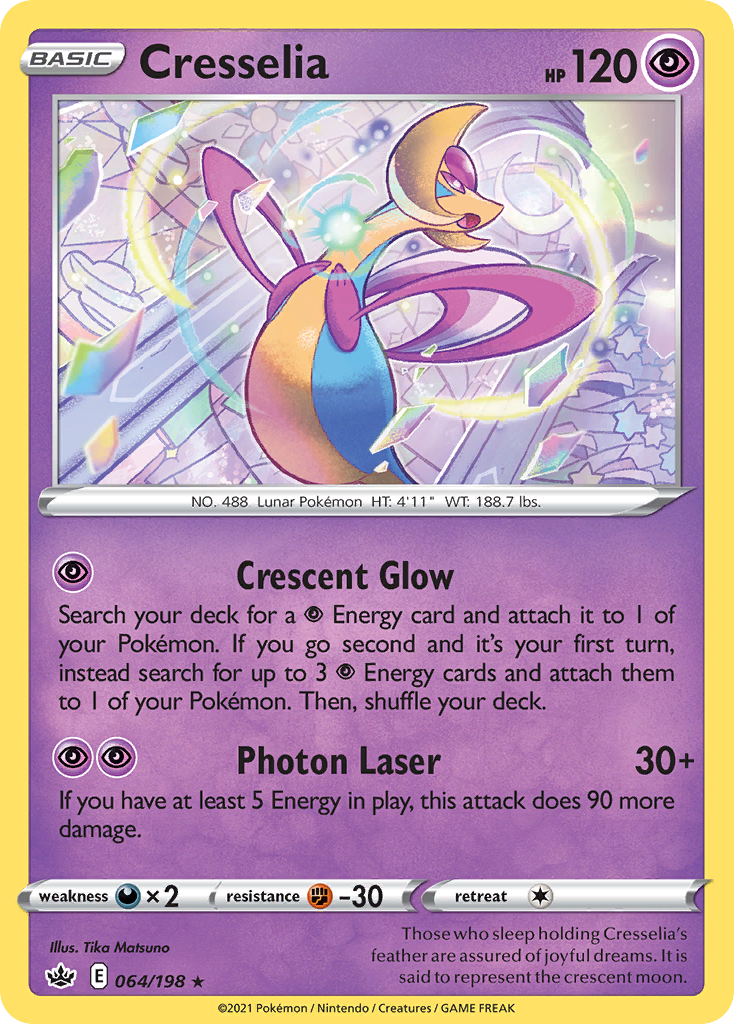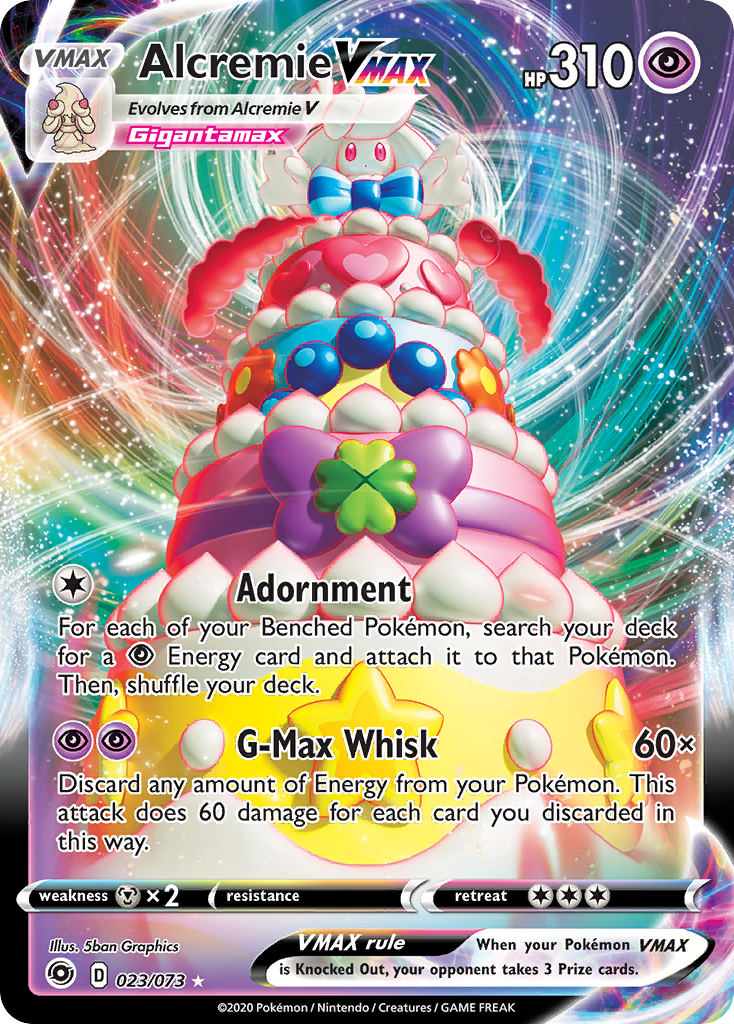Goodbye GXs – A Look at the Post-Rotation Metagame
Hello everyone! This is Grant Manley once again. Today I'm going to be covering the post-rotation Standard format, which I've already been playing quite a bit. Rotation is coming up in just a few days, and we'll be saying goodbye to every Pokemon-GX, Tag Team and otherwise, that we've come to know and love. Soon, the Standard format will completely centralize around Pokemon VMAX and the things that can beat them.
Format Overview
The new Standard format isn't too bad. There's lots of exploring to do and some clearly viable strategies right off the bat. The main issue is that winning the opening coin flip in this format is a huge advantage. The more you play, the more apparent this becomes. Aside from a few exceptions, such as Shadow Rider Calyrex's Cresselia having incredible utility for the player going second, going first puts you way ahead of your opponent right from the onset. Examples of decks that push this to the extreme are Ice Rider Calyrex V and Zacian V. They have the potential to set up a few low-maintenance pieces on Turn 1, and then pop off and decimate an opponent's board state on Turn 2. There are plenty of other decks that can push this Turn 1 advantage, too.
Going first is such a big deal because the games are shorter and most Pokemon give up more Prize cards per Knock Out. Getting the first attachment and the first Evolution — meaning the first opportunity to attack with a Pokemon VMAX — sets you far ahead. Furthermore, aside from Cresselia's Crescent Glow, there's no meaningful attack that can be used on Turn 1, which means that going second has no real upside. The only balancing factor here, and I use that term loosely, is that the player going first can't play a Supporter card on that turn, meaning they're reliant on their opening hand to have a couple of outs to useful Basic Pokemon.
The second main issue with the format is that Rapid Strike Urshifu VMAX gatekeeps several decks, much like Arceus and Dialga and Palkia-GX did. G-Max Rapid Flow and Medicham V prevent several decks and strategies from ever existing competitively. Malamar and Cherrim are examples of neat decks that would otherwise have a fair shot in the meta if it wasn't for Urshifu. The fact that Urshifu is so prevalent in the meta, combined with the fact that it snipes down small Pokemon so efficiently, ensures that single-Prize decks will probably never exist until it's gone.
Even against other decks, Medicham V is broken and should be banned. Furthermore, assuming it were banned, if a Bench Barrier Pokemon with low-HP like Mew were printed, it would help make the format a lot healthier. Mew had low HP, so Urshifu could easily take it out later on with some Inteleon (or with Boss's Orders), but it functioned to help low-HP decks set up and survive the early game, which they can't do now. However, even if Mew was still around, Medicham is essentially an auto-win button against it, so we would need that ban for Bench Barrier to even do anything. Wishful thinking, I know, but these two changes to the format would go a long way in making it more diverse and fair.
The Tier 1 dynamic in this format is interesting. Shadow Rider Calyrex VMAX is indisputably the best deck in format. Notably, Galarian Moltres V and Path to the Peak are the cards that are most often used to beat it. Furthermore, Rapid Strike Urshifu VMAX is an insanely powerful and oppressive deck, but it loses to Shadow Rider. There's essentially a matchup triangle at the top, but instead of three decks, it's two decks and a handful of counter-cards to the top deck. And of course, both Shadow Rider and Urshifu have their own unique interactions with the rest of the meta decks.
Shadow Rider Calyrex VMAX
Speaking of Shadow Rider, here's my current list for this beast of a deck:
Pokémon (16)
Trainers (31)
- 3x Boss's Orders (RCL #154)
- 3x Marnie
- 4x Professor's Research
- 4x Quick Ball
- 4x Fog Crystal (CRE #140)
- 4x Evolution Incense
- 4x Air Balloon
- 2x Great Ball (SUM #119)
- 1x Ordinary Rod
- 2x Training Court (RCL #169)
Shadow Rider Calyrex has a lot going for it. An unlimited damage cap, a great second-turn starter in Cresselia, and an incredibly favorable matchup against the second-best deck, Urshifu. Furthermore, it can deal with most of the other decks in the format, and it has a fighting chance against even the cards that are supposed to counter it. If you've played at all since Chilling Reign's release, you already know how and why this deck is so good.
My list is based off my friend Chip's list, with which he placed second at the Full Grip 1k event. However, I've changed a few things around. You may notice that this list is a little light on Stadiums, and is therefore weaker against Path to the Peak. There are good reasons for this, though. First of all, Path to the Peak isn't too prevalent right now. The main deck that makes use of it is Ice Rider Calyrex VMAX, which Shadow Rider is more than capable of stomping anyway. The other reason is that Stadiums can can really clog up the deck. Training Court is a useful Stadium for Shadow Rider to have access to, but too many of them hurt its consistency.
Another choice that this list makes is running two copies of the promo Shadow Rider Calyrex V. The version from Chilling Reign has two useful attacks, but they're both highly situational. It makes sense to run a 2/2, so you have access to the promo's useful attacks from time to time. It can be great going second if you whiff the Turn 1 Cresselia, since you can still accelerate an Energy without it. You can also retreat-lock Pokemon, such as Crobat V in the mirror, to buy yourself a turn to accelerate Energy and find resources. It's certainly a decent two-Prize attacker.
Running a 2-2 line of Alcremie VMAX might look a bit excessive, and it's certainly not mandatory, but I believe it's worthwhile to consistently have access to it in matchups where it's needed. Alcremie VMAX is a powerhouse of an attacker that can OHKO opposing Pokemon VMAX much more easily than Shadow Rider itself can, and its Adornment attack piles tons of Energy into play when required. Its non-Darkness Weakness also comes in handy against Galarian Moltres V. It's slightly useful at worst, and game-changing at best. Trying to play with a 1-1 line opens up two deck spaces, but it makes it highly inconsistent, and you could get punished for it when it matters most.
Next, I choose to run four Air Balloon and no Switch. Switch is more powerful than Air Balloon, but it's also a lot more situational. There are very few relevant effects and situations where you'll need Switch over Air Balloon, so I prefer the consistency of Air Balloon over the outs to odd scenarios that Switch provides. You can't retreat Alcremie VMAX for free, but it should usually be attacking if it's ever in the Active Spot anyway.
Finally, there's two Great Ball. Great Ball is included solely to bolster consistency, specifically in the early game when Shadow Rider needs the most help. You could play additional draw Supporters, but Supporters often clog up the hand later on, or any time you want to use Crobat.
This deck is the best and there's no two ways about it. Learning the matchups and tweaking the list is certainly worth your time if you are trying to win tournaments in this format. It's a bit high-maintenance, so its greatest weakness often ends up being itself. Sometimes it will falter in the early game and fall behind. Still, Shadow Rider is frighteningly consistent for how powerful it is.
This concludes the public portion of this article.
If you'd like to continue reading, consider purchasing a PokeBeach premium membership! If you're not completely satisfied with your membership, you can request a full refund within 30 days.
Each week we post high-quality content from some of the game's top players. Our article program isn't a corporate operation, advertising front, or for-profit business. We set our prices so that we can pay the game's top players to write the best content for our subscribers. Each article topic is carefully selected, goes through multiple drafts, and is touched up by our editors. We take great pride in our program!



